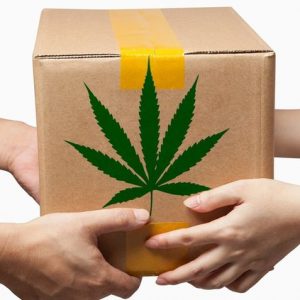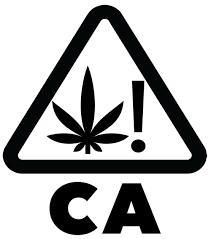 You might be asking yourself, “Why do we need to take training on how to handle cannabis-infused products? We already know what we’re doing, and it’s all simple stuff!” Well, do you want to know a secret? You’re right. It is all simple stuff.
You might be asking yourself, “Why do we need to take training on how to handle cannabis-infused products? We already know what we’re doing, and it’s all simple stuff!” Well, do you want to know a secret? You’re right. It is all simple stuff.
But if you have worked for a bunch of different dispensaries and cannabis-infused product manufacturers and more than likely you have seen some scary stuff, even from people who should have known better. So, while handling cannabis-infused products safely may seem obvious, some things might surprise you.
The point of this type of cannabis training is to show you the basic things you need to do to keep people safe. We’ll learn what a cannabis-infused product foodborne illness is and about the things that can make people sick. We’ll talk about biological hazards, chemical hazards, and physical hazards.
And we’ll also learn the common behaviors that cause foodborne illness in cannabis-infused products and how it’s a huge problem that knowing the basics could have prevented health concerns. Cannabis products must be handled and stored in proper conditions and staff should bear the applicable points below in mind when handling cannabis.
- At a minimum, employees should wash their hands with soap and water for at least twenty (20) seconds before handling cannabis plants or unpackaged cannabis products. Ideally, employees would also wear gloves made of latex, nitrile rubber, vinyl, or neoprene when touching plants or unpackaged products. Gloves should be discarded and replaced if they become soiled or accumulate too much resin from cannabis plants or products.
- Staff with medium-length or long hair should wear a hair net when tending to or harvesting cannabis plants, trimming leaves, processing raw cannabis, packaging dried cannabis, or preparing cannabis products (ex. making cannabis edibles). Employees with facial hair longer than stubble length should wear a beard net when engaging in these tasks.
- At routine intervals and as otherwise necessary, employees should clean, sanitize (when necessary and appropriate), thoroughly rinse, and dry all surfaces and equipment used for handling cannabis products. They should ensure that all traces of cleaning products are removed from contact surfaces before those surfaces come into contact with cannabis or any other product component.
- Staff should always store cannabis in airtight containers made from non-reactive, non-absorptive materials (ex. glass, stainless steel, etc.).
- Employees should store cannabis and cannabis products in a cool, dark, dry location.
- Employees should ask their supervisor or check product labels to determine whether or not an edible preparation of cannabis should be stored at room temperature (ex. a lozenge) or refrigerated (ex. cannabis-infused butter).
- Employees should cover their mouths and noses with tissues when they cough or sneeze. If possible, they should leave the area where cannabis is being handled or provided before coughing or sneezing. If tissues are not available, employees should cough or sneeze into their upper sleeves, not their hands. Regardless, employees should wash their hands or change their gloves after sneezing or coughing.
- Staff should not handle unpackaged cannabis products if they have an infectious disease that poses a risk of contagion to co-workers or patients. They should ask a supervisor or consult with a healthcare professional if they do not know whether an infectious disease poses a risk.
In addition to these protocols, government workplace safety training also applies so staff and their employers should be familiar with these standards and comply with them.
Cannabis Product Storage
 Like all plant material, cannabis will naturally deteriorate over time. The plant matter will dry, and the potency and terpene content will be diminished. This process can be slowed down by storing cannabis in opaque, non-reactive, and non-absorptive containers in a cool, dark, and dry location.
Like all plant material, cannabis will naturally deteriorate over time. The plant matter will dry, and the potency and terpene content will be diminished. This process can be slowed down by storing cannabis in opaque, non-reactive, and non-absorptive containers in a cool, dark, and dry location.
Staff can also help slow the deterioration of cannabis by using these precautions:
- Do not leave containers of cannabis open when not in use. Lids and bags should be closed firmly to create an airtight seal.
- Containers that are to be stored for more than two (2) weeks should be vacuum-sealed to preserve the cannabis within. Cannabis should not be vacuum-sealed directly in a plastic bag, as this would squeeze and crush the cannabis.
- Handle cannabis plants and flowers gently to avoid losing or damaging the resin on the outside of the flowers. This resin contains most of the therapeutically-active compounds in the plant.
Cannabis and Product Contamination

Cannabis plants and products are susceptible to contamination by natural and artificial sources at any point in the supply chain. Contaminants may include mold, mildew, pesticides, fertilizers, or any other material that should not be present.
Cultivation centers must be clean and environmental conditions must be maintained within parameters that prevent the growth of mold and mildew before cultivation begins and throughout the cultivation process.
This means walls, ceilings, doors, and equipment should be cleaned before planting and maintained throughout the cultivation period. To prevent mold and mildew growth, a cultivation center should carefully control humidity and filter incoming air.
Experienced cannabis cultivators can detect mildew and some molds with careful inspection of the stalks, stems, leaves, and flowers. The most common mildew, powdery mildew, lives between the cells of the plant and generates a visible white or gray powder as a waste product. By the time the powder is visible, the plant is thoroughly infested and must be destroyed.
Mold is commonly seen as a black growth on the inside or outside of flowers or on the stems. It may appear dry or moist. Most molds and mildews are not dangerous, but even those that are not considered toxic to the general population may pose a threat to patients with compromised immune systems. Therefore, all cannabis must pass independent laboratory testing for molds and mildews before it is supplied to patients or consumers.
Chemicals, such as insecticides and fertilizers, are another potential source of contamination. Employing genuine organic growing practices and integrated pest management practices may be among the most reliable ways for cultivators to prevent contamination with chemical compounds.
Under no circumstances should pesticides or fertilizers be used outside of their labeling instructions. Any application of pesticides should be done by government regulation. Cultivators must strictly adhere to instructions for using these products to ensure that unsafe amounts do not remain on or in the cannabis plant after it is harvested.
Contamination may also occur at various points throughout the manufacturing, packaging, and labeling processes, such as when equipment is not properly cleaned and sanitized between batches when employees do not practice good hygiene and sanitation, and when the proper steps are not taken to secure entryways, doorways, windows, skylights, ventilation systems, etc. from infiltration by rodents, pests, or other debris and filth.
Steps should be taken to control pests, such as the use of sticky mats outside key manufacturing areas and the installation and maintenance of filters at critical points in the ventilation system.
Cannabis Access, Use & Quantities Limits
 Most cannabis laws place limitations on who may access a dispensary. In jurisdictions that have not legalized the adult use of cannabis, only a verified medical cannabis patient or their designated caregiver may visit a dispensary to acquire cannabis.
Most cannabis laws place limitations on who may access a dispensary. In jurisdictions that have not legalized the adult use of cannabis, only a verified medical cannabis patient or their designated caregiver may visit a dispensary to acquire cannabis.
Patients should be prepared to show government-issued identification and their patient registry Identification (ID) card or physician recommendation to gain entry.
Minors are usually not permitted in dispensaries. In the case of a minor medical cannabis patient, a parent or legal guardian must be designated as a caregiver and visit the dispensary on the minor patient’s behalf. A caregiver may not obtain cannabis for his or her personal use unless the caregiver is also a verified medical cannabis patient or the jurisdiction permits the sale of cannabis to adults.
The jurisdictions that have legalized the sale of cannabis to adults require that individuals be at least twenty-one (21) years of age to purchase and possess it. Thus, dispensary staff must examine all customers’ IDs before granting them entry to the facility. The following are some guidelines for verifying ID:
- Ensure that the photo matches the person. Compare facial features, such as eye spacing and nose structure, and make sure they are consistent.
- Verify that the ID is not expired and that there is no evidence of tampering.
- Check the date of birth to ensure that the person is old enough to legally enter the establishment.
- Look for security features, such as UV images, holograms, microprinting, laser perforation, and tactile features.
- Verify that the ID meets the requirements of current government law.
Every government regulator that allows the sale of cannabis has set its limits regarding how much cannabis a person may purchase in a single transaction and/or within a given amount of time (ex. 30 days).
Employees should receive cannabis industry training on the quantities permitted in the jurisdiction of operation and on tracking customers’ purchases to ensure that they do not exceed the legal limit. Dispensary staff should know and follow all applicable government laws and regulations when dispensing cannabis.
Let us know what you think.
- SEO Powered Content & PR Distribution. Get Amplified Today.
- Platoblockchain. Web3 Metaverse Intelligence. Knowledge Amplified. Access Here.
- Source: https://greencultured.co/proper-cannabis-product-handling-storage-contamination/
- :is
- a
- About
- access
- Accumulate
- acquire
- active
- addition
- adhere
- Adult
- adults
- After
- AIR
- All
- allows
- already
- always
- among
- amount
- amounts
- and
- Another
- appear
- applicable
- Application
- ARE
- AREA
- areas
- artificial
- AS
- At
- auto
- available
- bag
- bags
- basic
- Basics
- BE
- Bear
- become
- before
- being
- below
- between
- Black
- Bunch
- by
- CAN
- cannabis
- Cannabis Industry
- cannabis products
- card
- careful
- carefully
- case
- Cause
- Center
- Centers
- chain
- change
- check
- chemical
- circumstances
- Cleaning
- closed
- CO
- come
- Common
- commonly
- compare
- component
- Compromised
- Concerns
- conditions
- considered
- consistent
- Consumers
- contact
- Contagion
- Containers
- contains
- contaminants
- content
- control
- Cool
- could
- cover
- create
- critical
- cultivation
- Current
- damaging
- Dangerous
- Dark
- Date
- designated
- destroyed
- Determine
- different
- directly
- Disease
- dispensaries
- doing
- doors
- down
- dry
- edible
- employees
- engaging
- enough
- ensure
- Enter
- entry
- environmental
- equipment
- establishment
- etc
- Ether (ETH)
- Even
- evidence
- exceed
- eye
- facial
- Facility
- familiar
- Features
- filter
- firmly
- follow
- following
- For
- from
- Gain
- General
- given
- glass
- good
- Government
- granting
- gray
- Growing
- Growth
- guardian
- guidelines
- Hair
- handle
- Handling
- Hands
- Harvesting
- Have
- Health
- healthcare
- help
- Holograms
- How
- How To
- HTTPS
- huge
- ID
- Identification
- illness
- images
- in
- include
- Incoming
- independent
- individuals
- industry
- instructions
- integrated
- IT
- ITS
- jpg
- jurisdiction
- jurisdictions
- Keep
- Key
- Know
- Knowing
- known
- Label
- labeling
- laboratory
- laser
- Law
- Laws
- Laws and regulations
- LEARN
- Leave
- Legal
- legalized
- Length
- likely
- LIMIT
- limitations
- limits
- Lives
- location
- Long
- longer
- losing
- made
- maintenance
- make
- Making
- management
- Manufacturer
- manufacturing
- material
- materials
- Matter
- max-width
- means
- medical
- medical cannabis
- Meets
- might
- mind
- minimum
- minor
- molds
- more
- most
- Natural
- necessary
- Need
- net
- nose
- obtain
- obvious
- of
- Oil
- Old
- on
- open
- operation
- organic
- Other
- otherwise
- outside
- packaging
- parameter
- patient
- patients
- People
- period
- person
- personal
- physician
- Place
- Planting
- plants
- plastic
- plato
- Plato Data Intelligence
- PlatoData
- Point
- points
- population
- poses
- possible
- potency
- practice
- practices
- prepared
- preparing
- present
- prevent
- Problem
- process
- processes
- processing
- Product
- Products
- professional
- proper
- properly
- provided
- purchase
- purchases
- Raw
- Recommendation
- regarding
- Regardless
- registry
- Regulation
- regulations
- regulator
- reliable
- Reliable Ways
- remain
- Removed
- replaced
- require
- requirement
- Resin
- rig
- Rise
- Risk
- Room
- rubber
- safe
- safely
- Safety
- sale
- seconds
- Secret
- secure
- security
- set
- should
- show
- Simple
- single
- slow
- So
- soap
- some
- Source
- Sources
- Squeeze
- Staff
- Stainless Steel
- standard
- steel
- stems
- Steps
- storage
- store
- stored
- structure
- such
- supplied
- supply
- supply chain
- Surface
- susceptible
- Systems
- Take
- Talk
- tasks
- Testing
- that
- The
- The Area
- The Basics
- their
- Them
- therefore
- These
- things
- thoroughly
- threat
- throughout
- time
- tissues
- to
- too
- touching
- Tracking
- Training
- transaction
- us
- use
- usually
- various
- verified
- verifying
- vinyl
- visible
- Visit
- Waste
- Water
- ways
- Weeks
- WELL
- What
- whether
- while
- white
- WHO
- will
- windows
- with
- within
- worked
- Workplace
- would
- years
- yourself
- zephyrnet








![[NEW] Cannabis-Infused Product Handler "Freshly Released" | Green CulturED](https://platodata.io/wp-content/uploads/2023/10/new-cannabis-infused-product-handler-freshly-released-green-cultured.png)

